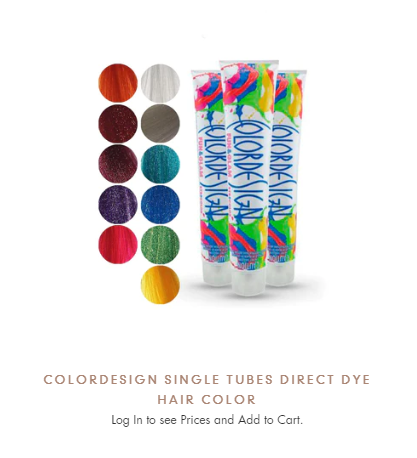March 25, 2024
Vivid Wonders: Unlocking the Magic of Direct Hair Color for Stylists
Direct hair color, with its vivid hues and straightforward application, is a tool that can expand your palette of services. Understanding when to use it, how to best apply it, and when to opt for alternative coloring methods, is essential for achieving the desired outcome and ensuring client satisfaction.
What is Direct Hair Color?
Direct hair color refers to dye that is applied directly to the hair without the need for a developer. This type of color sits on the hair's surface, depositing pigments into the outer hair cuticle. It’s known for its ability to deliver vibrant, bold colors ranging from fiery reds to electric blues, without the commitment of permanent hair color.
Advantages for Your Salon
- Minimal Damage: Because it doesn't require developer or bleach for the color to take hold (except in cases where achieving a lighter base is necessary), direct hair color is less damaging compared to permanent options.
- Vibrancy and Variety: Offer your clients a spectrum of temporary, bold shades that can fade over time, allowing for flexibility and change.
- Speed and Simplicity: The application process is straightforward and can be more time-efficient than traditional coloring methods, appealing to clients looking for a quick makeover.
Best Practices for Application
- Consultation is Key: Always start with a thorough consultation. Discuss the client’s vision, assess their hair's condition, and consider their history with chemical processes to ensure the desired result is achievable.
- Preparation Matters: For the most vibrant results, direct color works best on light or pre-lightened hair. Ensure the hair is clean, dry, and free from build-up that could block color absorption.
- Patch Test: Even though direct dyes are generally gentle, a patch test can prevent unexpected allergic reactions.
- Section and Apply: Work in small sections to ensure even coverage. Use gloves and brushes for precision.
- Process Accordingly: Follow the manufacturer’s recommended processing time. Leaving the dye in longer won’t necessarily make it last longer and could potentially affect hair condition or color outcome.
- Rinsing: Rinse with cool water to help seal the cuticle and prevent the color from bleeding.
When to Use Direct Hair Color
- Temporary Fashion Statements: Ideal for clients looking to experiment with color without long-term commitment.
- Enhancing Natural Shades: Use softer, more natural tones for clients wishing to enrich their natural color with added gloss and depth.
- Special Occasions: Perfect for clients wanting a unique look for events, parties, or even to match their mood or season.
When Not to Use
- Covering Grays: Direct color generally doesn’t cover gray hair effectively due to its inability to penetrate the hair shaft deeply.
- Long-Term Solution: Clients seeking a permanent change or who don’t want to maintain color frequently may need a different solution.
- Damaged Hair: Severely damaged hair might not hold color well, and further consultation on hair health might be necessary before proceeding.

